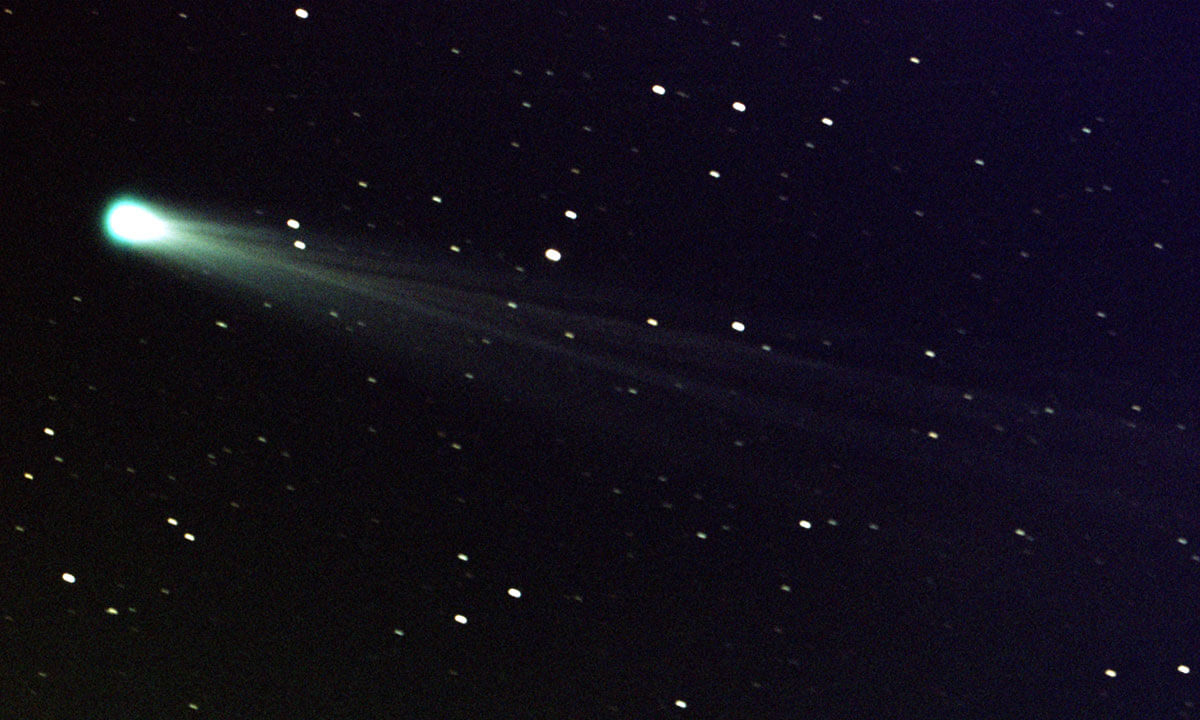
Comets, such as the comet ISON pictured here, are thought to hold material from the time when the Sun and planets were forming. They are like giant, frozen time capsules in our solar system. Credit: NASA/MSFC/Aaron Kingery
Where do comets come from?
Comets are mostly found way out in the solar system. Some exist in a wide disk beyond the orbit of Neptune called the Kuiper Belt. We call these short-period comets. They take less than 200 years to orbit the Sun.
Other comets live in the Oort Cloud, the sphere-shaped, outer edge of the solar system that is about 50 times farther away from the Sun than the Kuiper Belt. These are called long-period comets because they take much longer to orbit the Sun. The comet with the longest known orbit takes more than 250,000 years to make just one trip around the Sun!
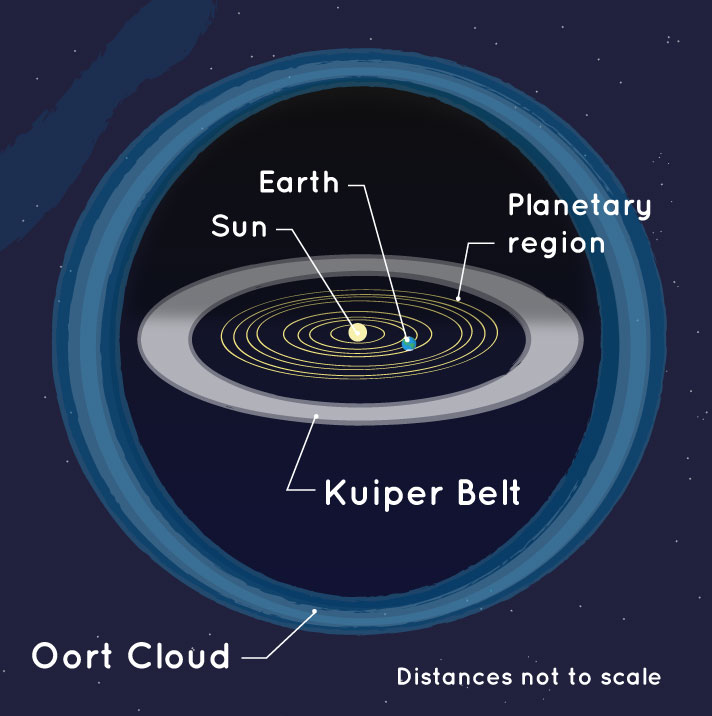
The Kuiper Belt is beyond the orbits of the planets in our solar system. The Oort Cloud is far beyond the Kuiper belt. Credit: NASA/JPL-Caltech
What brings comets near Earth so we can see them?
The gravity of a planet or star can pull comets from their homes in the Kuiper Belt or Oort Cloud. This tug can redirect a comet toward the Sun. The paths of these redirected comets look like long, stretched ovals.
As the comet is pulled faster and faster toward the Sun, it swings around behind the Sun, then heads back toward where it came from. Some comets dive right into the Sun, never to be seen again. When the comet is in the inner solar system, either coming or going, that's when we may see it in our skies.
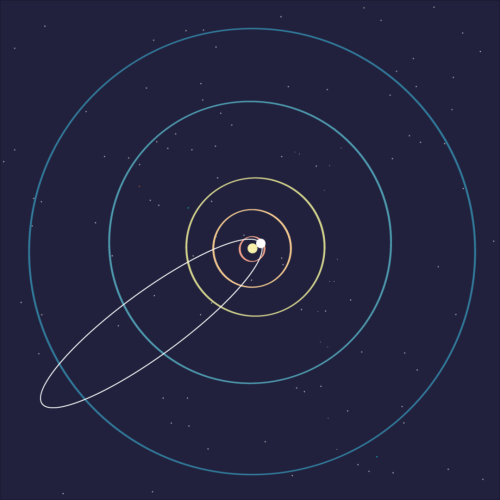
This animation represents the 76-year, elliptical orbit of Halley’s comet (the white dot) against the more circular orbits of the planets. Credit: NASA/JPL-Caltech
What are the parts of a comet?
At the heart of every comet is a solid, frozen core called the nucleus. This ball of dust and ice is usually less than 10 miles (16 kilometers) across – about the size of a small town. When comets are out in the Kuiper Belt or Oort Cloud, scientists believe that’s pretty much all there is to them – just frozen nuclei.
But when a comet gets close to the Sun, it starts heating up. Eventually, the ice begins to turn to gas. This can also cause jets of gas to burst out of the comet, bringing dust with it. The gas and dust create a huge, fuzzy cloud around the nucleus called the coma.
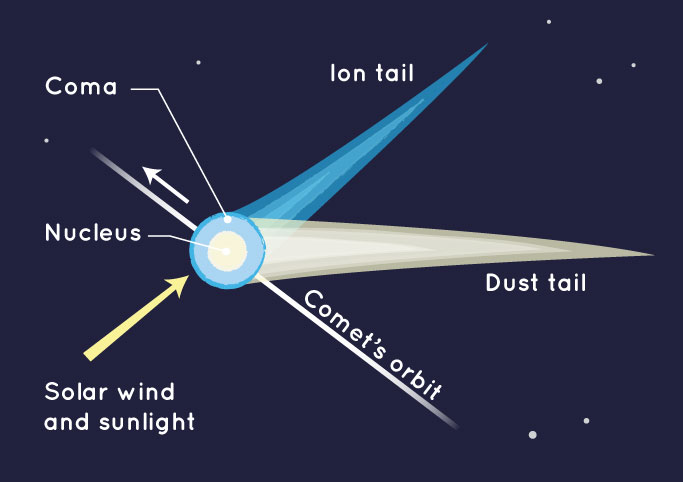
This diagram shows the anatomy of a comet. Credit: NASA/JPL-Caltech
Why do comets have tails?
As dust and gases stream away from the nucleus, sunlight and particles coming from the Sun push them into a bright tail that stretches behind the comet for millions of miles.
When astronomers look closely, they find that comets actually have two separate tails. One looks white and is made of dust. This dust tail traces a broad, gently curving path behind the comet. The other tail is bluish and is made up of electrically charged gas molecules, or ions. The ion tail always points directly away from the Sun.
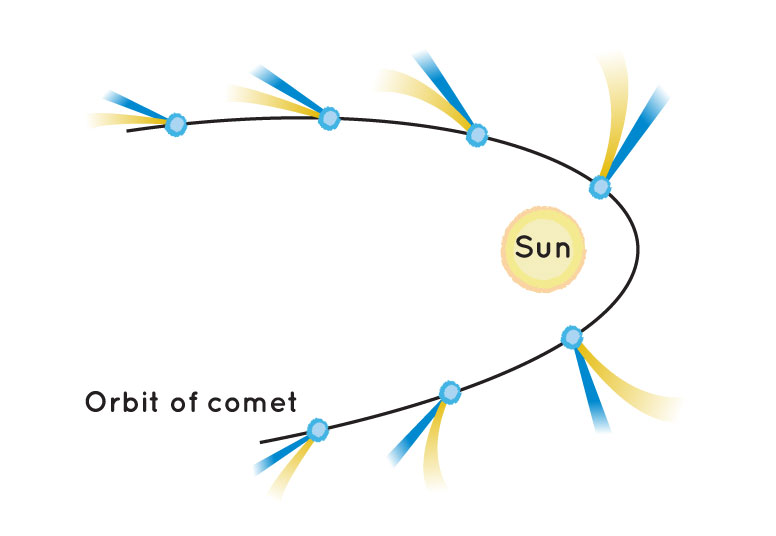
A comet has two tails that get longer the closer it gets to the Sun. Both tails are always directed away from the Sun. The ion tail (blue) always points directly away from the Sun, while the dust tail (yellow) points away from the Sun in a slightly different direction than the ion tail. Credit: NASA/JPL-Caltech
How do we learn about comets?
People have been interested in comets for thousands of years. But it wasn't possible to get a good view of a comet nucleus from Earth since it is shrouded by the gas and dust of the coma. In recent years, though, several spacecraft have had the chance to study comets up close.
NASA’s Stardust mission collected samples from Comet Wild 2 (prounounced like “Vilt two”) and brought them back to Earth. Scientists found those particles to be rich in hydrocarbons, which are chemicals we consider the “building blocks” of life.
Rosetta, a mission of the European Space Agency that had several NASA instruments onboard, studied Comet 67P Churyumov-Gerasimenko. Rosetta dropped a lander on the nucleus, then orbited the comet for two years. Rosetta detected building blocks of life on this comet, too. And images showed Comet 67P to be a rugged object with lots of activity shaping its surface.
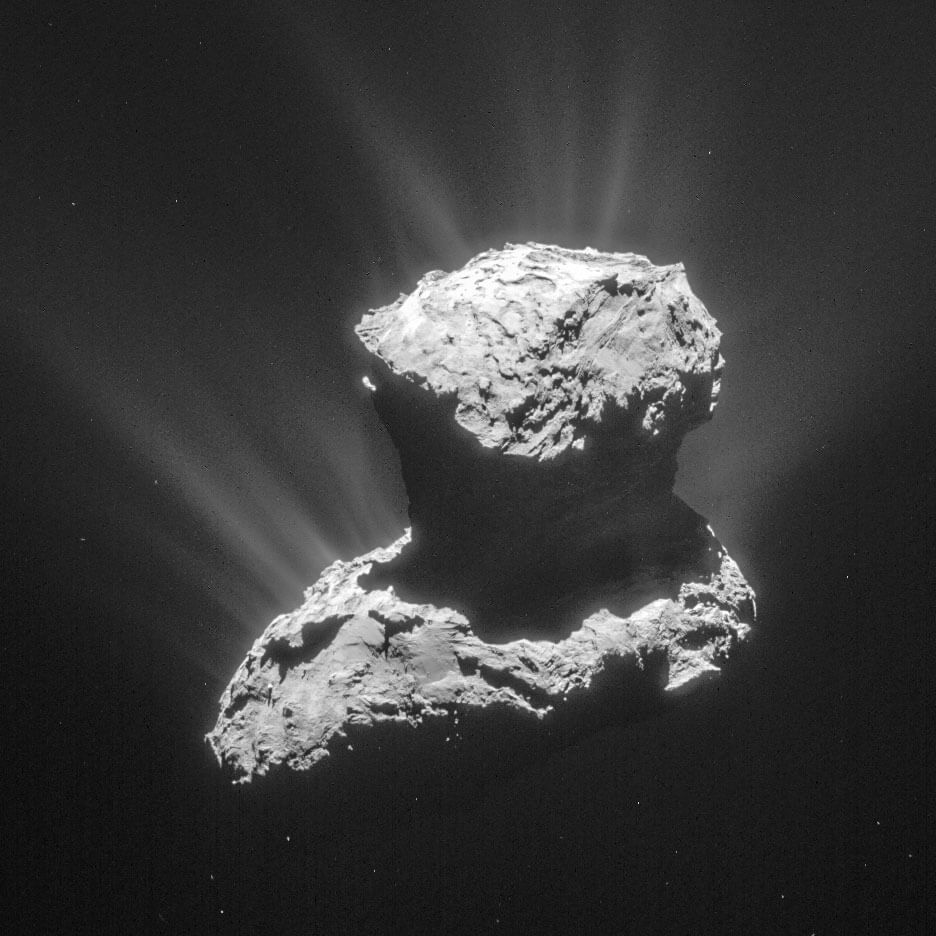
Rosetta captured incredible images of the rubber ducky-shaped Comet 67P. Credit: ESA/Rosetta/NavCam – CC BY-SA IGO 3.0
Thanks to these missions and others like them, we now know a lot more about the structure of comets and the types of chemicals found on and around them. We’ve even learned a bit more about the formation of our solar system!


